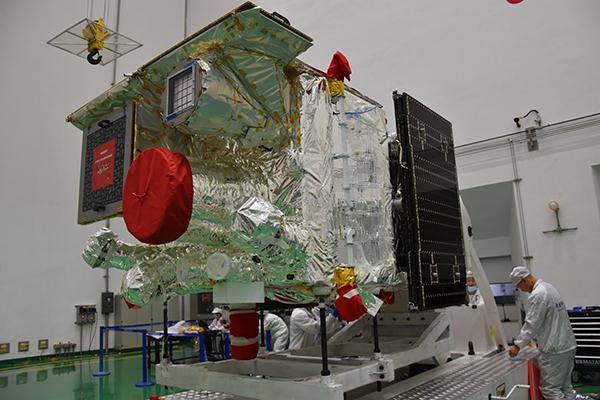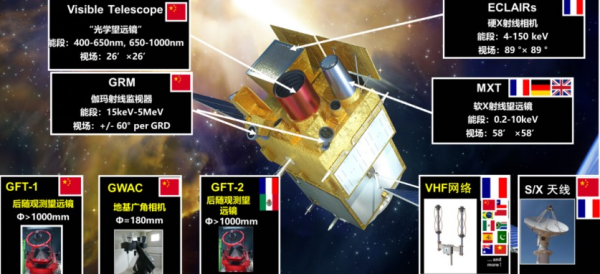
The international team that worked on the Space-based Multi-band Variable Object Monitor (SVOM) satellite poses for a group photo at the Xichang Satellite Launch Center, Sichuan Province, southwest China, June 22, 2024. /CGTN
A Sino-French astronomical satellite named Space-based Multi-band Variable Object Monitor (SVOM) has achieved a significant milestone by detecting three gamma-ray bursts (GRBs) only two weeks after launch, according to the Chinese Academy of Sciences (CAS).
These GRBs are incredibly powerful bursts of gamma rays originating from specific points in space. They represent some of the most violent cosmic explosions since the Big Bang, offering valuable insights into the universe's formation and evolution. Understanding these bursts can answer fundamental scientific questions about the cosmos.

A view of the SVOM. /CAS
SVOM is a significant example of successful international collaboration between China and France in space science. It stands as the world's most advanced satellite for comprehensive, multi-band observations of GRBs to date.
Developed under the leadership of the Innovation Academy for Microsatellites of CAS, the satellite integrates four payloads co-developed by China and France, enabling observations across a broad spectrum, ranging from high-energy to near-infrared wavelengths.
According to the CAS project team, SVOM's gamma-ray detector became operational on June 24. During on-orbit testing on June 27, the detector's high-voltage systems were activated, and it then captured its first GRB, coded GRB 240627B. This marked the satellite's first scientific achievement in space.
Testing confirmed a high degree of consistency between the GRB's light curve observed by SVOM and data from China's GECAM-C space telescope and the Fermi gamma-ray space telescope.

An illustration shows SVOM's payloads. /CAS
Following this initial success, the gamma-ray monitor detected two more GRBs on June 29 and July 2, respectively. These detections solidified SVOM's exceptional capability in precisely pinpointing GRBs. The initial data from these three GRBs have already been submitted to the General Coordinates Network (GCN). Additionally, the satellite has completed its power-on tests.
According to the on-orbit testing plan, SVOM will now proceed with calibrating its payloads and conducting operational testing. The scientific mission observations are anticipated to commence in August, further propelling exploration and scientific research in space astronomy, particularly in the realm of GRB detection.








 User Center
User Center My Training Class
My Training Class Feedback
Feedback












Comments
Something to say?
Log in or Sign up for free